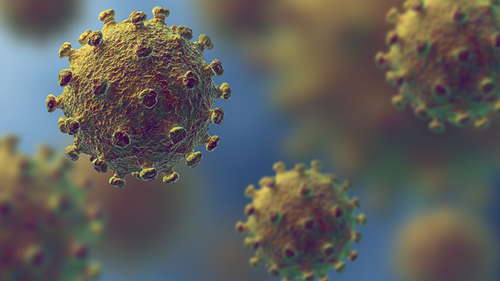|
Recently, researchers from the Center for Environmental Health Engineering at Arizona State University's Biodesign Institute have developed a new approach to monitoring regional levels of SARS-CoV-2—the virus that causes COVID-19.
The research is being conducted through a partnership between the university and the City of Tempe, Arizona.
Looking at Wastewater
Led by Professor Rolf Halden, who directs the Biodesign Center for Environmental Health Engineering and teaches in ASU’sSchool for Sustainability and the Built Environment, and Olga Hart, lead author of the new study and a researcher in the Biodesign Center for Health Engineering, the team has begun developing a new monitoring approach for the novel coronavirus, among other dangerous pathogens and chemical agents, in wastewater.
|

|
|
Azizona State University
|
|
Recently, researchers from the Center for Environmental Health Engineering at Arizona State University's Biodesign Institute have developed a new approach to monitoring regional levels of SARS-CoV-2—the virus that causes COVID-19.
|
“Our results show that exclusive reliance on testing of individuals is too slow, cost-prohibitive and in most places, impractical, given our current testing capacity,” Halden said. “However, when preceded by population-wide screening of wastewater, the task becomes less daunting and more manageable.”
In their redefined method, known as wastetwater-based epidemiology, the researchers collect sewage samples so that clues can be analyzed over human health, and can even detect levels of coronavirus infection at both a local and global scale. The high sensitivity of the type of study is also reported to have the potential to detect the signature of a single infected individual among 100 to 2 million persons.
According to ASU, the research method could lead to real-time monitoring of disease outbreaks, resistant microbes, levels of drug use or health indicators of diabetes, obesity and other maladies.
The process works by first transcribing coronavirus RNA into complementary DNA (cDNA) by the reverse transcriptase enzyme, then amplifying the resultant DNA to improve signal detection. This step is followed by the use of sequencing techniques to confirm viral presence in the wastewater samples.
When probing for the SARS-CoV-2 virus, the wastewater is screened for the presence of the virus’ nucleic acid fragments. The RNA genomes are amplified through a process known as reverse-transcriptase quantitative PCR (RT qPCR)
"We can, in one go, monitor an entire community for presence of the new coronavirus,” Hart said. “However, trade-offs exist. To get the best results and avoid loss of information, we want to measure close to virus hot spots and take into account wastewater temperature and dilution when estimating the number of infected cases."
Already, the university suggests that each person infected with SARS-CoV-2 will excrete millions, possibly billions, of viral genomes into wastewater per day, based on estimates on European and North America data. Given those chances, researchers have translated that number to landing somewhere between 0.15 and 141.5 million viral genomes per liter of wastewater generated.
Using this type of monitoring system, along with RT qPCR, researchers predict that they could detect the coronavirus with high sensitivity, simply by monitoring roughly every 1 in 114 individuals in in the worst-case scenario and just one positive case among 2 million noninfected individuals under optimum conditions. The information collected would be able to help pinpoint viral hotspots so that resources could better be directed to vulnerable populations, while restrictions could be eased in virus-free regions.
Although the research has since been published in an issue of the journal, Science of the Total Environment, the team has also created OneWaterOneHealth, a nonprofit project of the ASU Foundation that seeks to bring COVID-19 testing to those who currently cannot afford it.
Halden reports that using the ASU-designed screening, roughly 70% of the U.S. population could be screened for SARS-CoV-2 through monitoring the country’s 15,014 wastewater treatment plants at an estimated cost for chemical reagents of $225,000.
Once hotspots in the nation are targeted, testing individuals using clinical methods could then be implemented.
|